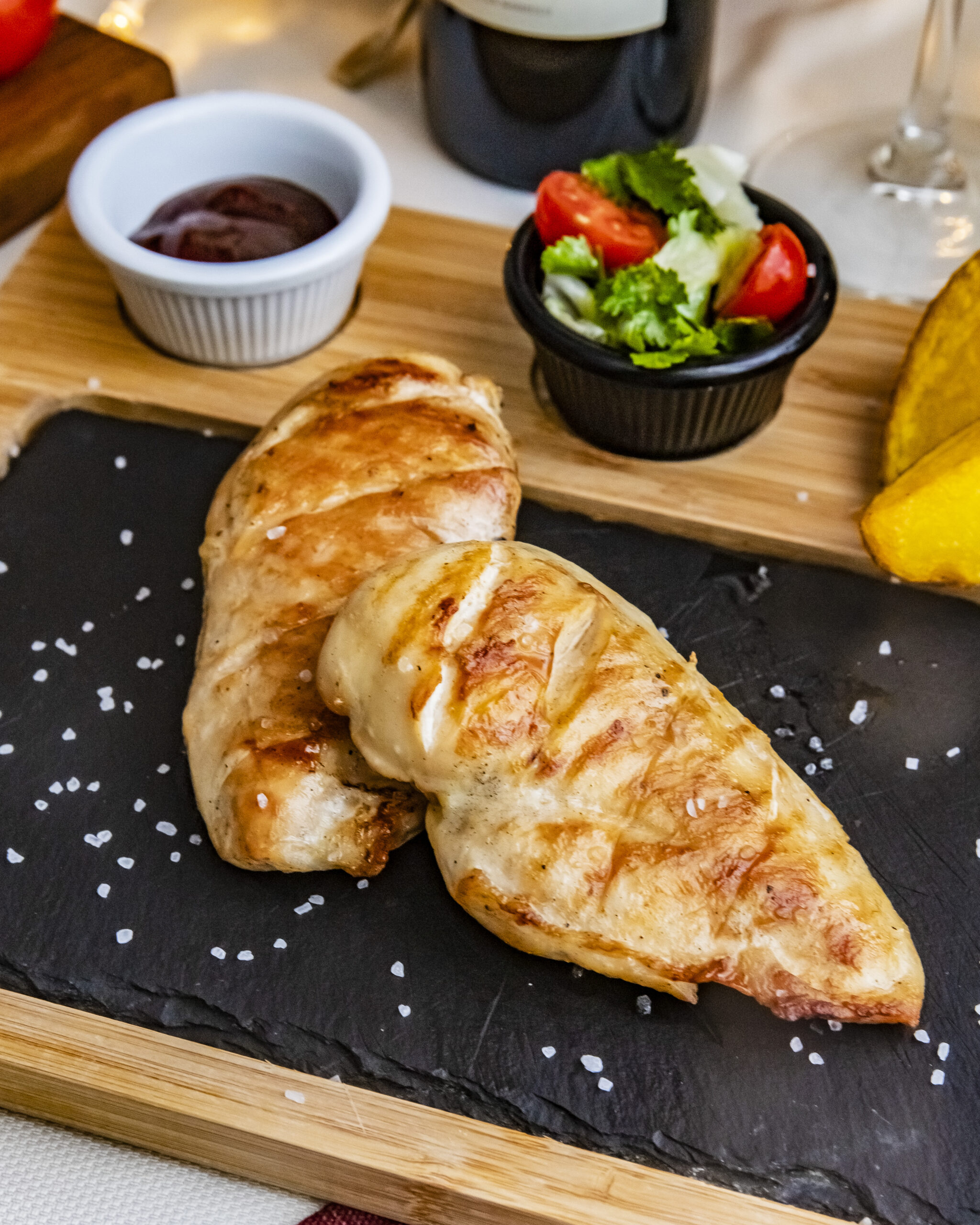Chicken breast is a staple in diets worldwide, celebrated for its high protein content, low fat, and versatility in cooking. Among various serving sizes, the 6 oz chicken breast is especially popular among fitness enthusiasts, athletes, and those managing their macronutrients. Understanding the nutritional profile of a 6 oz chicken breast can help you make informed decisions about your diet and health goals. In this comprehensive guide, we’ll dive deep into the 6 oz Chicken Breast Nutrition, how it fits into different diets, its health benefits, and how you can prepare it to maximize its nutritional value.
Nutritional Overview of a 6 oz Chicken Breast
When we refer to a “6 oz chicken breast,” we’re typically talking about a raw, skinless, boneless portion. After cooking, the weight slightly decreases due to water loss, but for consistency, we’ll focus on the raw weight.
Macronutrients
Here’s the approximate macronutrient breakdown for a 6 oz raw, skinless chicken breast:
-
Calories: 280 – 300 kcal
-
Protein: 53 – 55 grams
-
Fat: 6 – 7 grams
-
Carbohydrates: 0 grams
-
Fiber: 0 grams
-
Sugar: 0 grams
As evident, chicken breast is almost entirely protein and very low in fat, with negligible carbohydrates. This makes it an ideal choice for high-protein, low-carb, or ketogenic diets.
Note: Cooking methods such as frying, breading, or heavy sauces can significantly alter these numbers.
Micronutrients
-
Niacin (Vitamin B3): Important for energy metabolism
-
Vitamin B6: Crucial for brain development and function
-
Phosphorus: Vital for healthy bones and teeth
-
Selenium: An antioxidant that protects cells from damag.
-
Potassium: Helps regulate fluid balance and muscle contractions
These micronutrients play critical roles in maintaining bodily functions, making chicken breast not just a source of protein but a contributor to overall wellness.
Health Benefits of Eating a 6 oz Chicken Breast
1. Muscle Building and Repair
Protein is essential for muscle growth and repair. A 6 oz chicken breast provides more than 50 grams of protein, covering a significant portion of the daily requirement for most adults. Athletes and bodybuilders, in particular, benefit from its high-protein content to support hypertrophy and recovery after intense workouts.
2. Weight Management
Protein-rich foods like chicken breast promote satiety, which can help control appetite and reduce overall calorie intake.
Eating a 6 oz chicken breast can help you stay full longer, making it easier to stick to a calorie deficit if weight loss is your goal.
3. Heart Health
Skinless chicken breast is low in saturated fat, making it a heart-healthy protein option compared to red meats like beef or pork. Combined with a diet rich in fruits, vegetables, and whole grains, chicken breast can contribute to improved cardiovascular health.
4. Blood Sugar Regulation
Despite being devoid of carbohydrates, chicken breast’s substantial protein composition helps control blood sugar levels by delaying the absorption of sugar when eaten with other foods. This can be particularly beneficial for people with diabetes or insulin resistance.
5. Nutrient Density
The vitamins and minerals in chicken breast support a wide range of functions, from energy production to immune health. For example, phosphorus promotes bone health, while selenium functions as an antioxidant to shield your cells from oxidative stress.
6 oz Chicken Breast Nutrition in Different Diets
Chicken breast is incredibly adaptable, fitting into almost every type of diet plan.
1. High-Protein Diet
Chicken breast is the poster child for high-protein diets, helping individuals meet their elevated protein needs easily without excessive calories.
2. Ketogenic Diet
Since it contains virtually no carbohydrates, chicken breast is a keto-friendly protein source. Pair it with high-fat ingredients like avocado or olive oil to meet fat requirements.
3. Paleo Diet
Chicken breast is a natural, minimally processed food, aligning perfectly with paleo principles that emphasize whole foods.
4. Mediterranean Diet
Though the Mediterranean diet often focuses on fish, lean poultry like chicken breast is still a recommended protein choice when consumed in moderation, often grilled or baked.
5. Weight Loss Programs
Many commercial weight loss programs, like Weight Watchers or Nutrisystem, include chicken breast in their meal plans due to its leanness and ability to support muscle preservation during weight loss.
Cooking Methods to Preserve Nutritional Value
How you cook your chicken breast matters significantly. Some methods add unnecessary fat and calories, while others preserve its lean profile.
Healthiest Methods
-
Grilling: Adds flavor without much fat. Just be cautious of charred portions, which can contain harmful compounds.
-
Baking: Retains moisture without needing a lot of added fat.
-
Poaching: Cooks chicken gently in water or broth, keeping it moist without added calories.
-
Air-frying: A modern method that creates a crispy exterior without excess oil.
Methods to Avoid (or Use Sparingly)
-
Deep-frying: Adds a large number of calories and unhealthy fats.
-
Heavy cream sauces: These can turn a lean meal into a calorie bomb.
-
Breaded preparations: Increase carbohydrate and calorie content significantly.
Tip: Season chicken breast with herbs, spices, lemon juice, or vinegar for flavor without extra calories.
Potential Downsides to Consider
While chicken breast is nutritious, relying on it exclusively can have downsides:
1. Nutrient Variety
Eating only chicken breast can lead to deficiencies in nutrients found in other foods, like omega-3 fatty acids (from fish) or iron (from red meat).
2. Risk of Overcooking
Chicken breast, being low in fat, can dry out easily. Overcooked chicken breast becomes tough and less palatable, which can discourage healthy eating habits.
3. Antibiotics and Hormones
In some regions, poultry farming practices involve the use of antibiotics and hormones. Opt for organic, free-range, or antibiotic-free chicken whenever possible to minimize exposure.
How to Incorporate 6 oz Chicken Breast into Meals
Given its neutral flavor, chicken breast is extremely versatile. Here are a few meal ideas:
-
Wraps: Use a whole-grain wrap, vegetables, and hummus for a quick lunch.
-
Stir-fries: Combine chicken with vegetables and a low-sodium soy sauce for a quick, nutrient-packed meal.
-
Soups: Add poached chicken breast to vegetable or bean soups.
-
Meal prep: Grill several chicken breasts at once to have easy proteins ready for the week.
Sample Daily Menu Featuring a 6 oz Chicken Breast
Here’s an example of how you might incorporate a 6 oz chicken breast into a healthy, balanced day:
-
Breakfast: Berries on oatmeal with a dollop of nut butter
-
Snack: Greek yogurt with walnuts
-
Lunch: Grilled 6 oz chicken breast salad with spinach, tomatoes, cucumber, avocado, and balsamic dressing
-
Snack: Apple slices with peanut butter
-
Dinner: Steamed broccoli, quinoa, and baked salmon
This menu balances protein, healthy fats, fiber, and micronutrients to promote overall wellness.
Final Thoughts
A 6 oz Chicken Breast Nutrition powerhouse, offering a substantial amount of high-quality protein with minimal fat and calories. Its impressive vitamin and mineral profile supports everything from energy production to immune health, making it an excellent addition to a balanced diet.By choosing healthy cooking methods and pairing chicken breast with a variety of vegetables, grains, and healthy fats, you can create meals that are both delicious and nourishing. However, remember the importance of dietary diversity. Incorporating a range of protein sources ensures you receive all the nutrients your body needs.Whether your goal is building muscle, losing weight, managing blood sugar, or simply eating healthfully, the humble 6 oz chicken breast remains a top choice.





